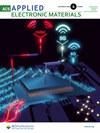Schizophrenia diagnosis based on diverse epoch size resting-state EEG using machine learning
IF 4.3
3区 材料科学
Q1 ENGINEERING, ELECTRICAL & ELECTRONIC
引用次数: 0
Abstract
Schizophrenia is a severe mental disorder that impairs a person’s mental, social, and emotional faculties gradually. Detection in the early stages with an accurate diagnosis is crucial to remedying the patients. This study proposed a new method to classify schizophrenia disease in the rest state based on neurologic signals achieved from the brain by electroencephalography (EEG). The datasets used consisted of 28 subjects, 14 for each group, which are schizophrenia and healthy control. The data was collected from the scalps with 19 EEG channels using a 250 Hz frequency. Due to the brain signal variation, we have decomposed the EEG signals into five sub-bands using a band-pass filter, ensuring the best signal clarity and eliminating artifacts. This work was performed with several scenarios: First, traditional techniques were applied. Secondly, augmented data (additive white Gaussian noise and stretched signals) were utilized. Additionally, we assessed Minimum Redundancy Maximum Relevance (MRMR) as the features reduction method. All these data scenarios are applied with three different window sizes (epochs): 1, 2, and 5 s, utilizing six algorithms to extract features: Fast Fourier Transform (FFT), Approximate Entropy (ApEn), Log Energy entropy (LogEn), Shannon Entropy (ShnEn), and kurtosis. The L2-normalization method was applied to the derived features, positively affecting the results. In terms of classification, we applied four algorithms: K-nearest neighbor (KNN), support vector machine (SVM), quadratic discriminant analysis (QDA), and ensemble classifier (EC). From all the scenarios, our evaluation showed that SVM had remarkable results in all evaluation metrics with LogEn features utilizing a 1-s window size, impacting the diagnosis of Schizophrenia disease. This indicates that an accurate diagnosis of schizophrenia can be achieved through the right features and classification model selection. Finally, we contrasted our results to recently published works using the same and a different dataset, where our method showed a notable improvement.利用机器学习,基于不同历元大小的静息态脑电图诊断精神分裂症
精神分裂症是一种严重的精神障碍,会逐渐损害患者的精神、社交和情感能力。早期发现并做出准确诊断对患者的康复至关重要。本研究提出了一种基于脑电图(EEG)获得的大脑神经信号,在静息状态下对精神分裂症进行分类的新方法。使用的数据集包括 28 名受试者,每组 14 人,分别为精神分裂症患者和健康对照组。数据通过 19 个脑电图通道从头皮采集,频率为 250 赫兹。由于大脑信号的变化,我们使用带通滤波器将脑电信号分解为五个子带,以确保最佳的信号清晰度并消除伪影。这项工作是在几种情况下进行的:首先,应用传统技术。其次,利用增强数据(加性白高斯噪声和拉伸信号)。此外,我们还评估了最小冗余最大相关性(MRMR)作为减少特征的方法。所有这些数据方案都使用了三种不同的窗口大小(历时):1、2 和 5 秒,利用六种算法提取特征:快速傅立叶变换 (FFT)、近似熵 (ApEn)、对数能量熵 (LogEn)、香农熵 (ShnEn) 和峰度。对得出的特征采用了 L2 归一化方法,对结果产生了积极影响。在分类方面,我们采用了四种算法:K近邻(KNN)、支持向量机(SVM)、二次判别分析(QDA)和集合分类器(EC)。我们的评估结果表明,在使用 1 秒窗口大小的 LogEn 特征的所有评估指标中,SVM 都取得了显著的结果,对精神分裂症疾病的诊断产生了影响。这表明,通过选择正确的特征和分类模型,可以实现对精神分裂症的准确诊断。最后,我们将我们的结果与最近发表的使用相同和不同数据集的作品进行了对比,我们的方法在这些数据集上有明显的改进。
本文章由计算机程序翻译,如有差异,请以英文原文为准。
求助全文
约1分钟内获得全文
求助全文

 求助内容:
求助内容: 应助结果提醒方式:
应助结果提醒方式:


